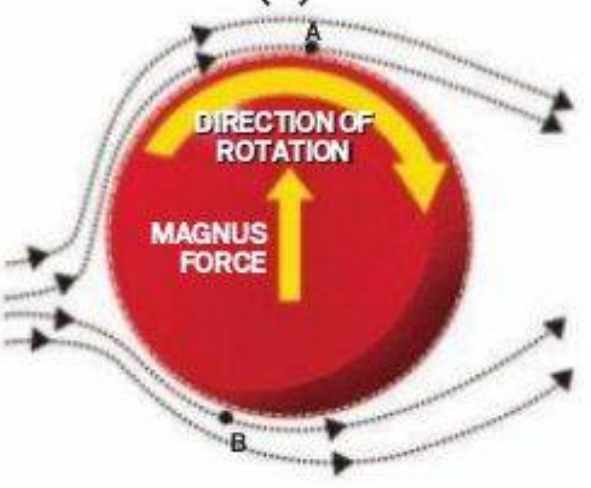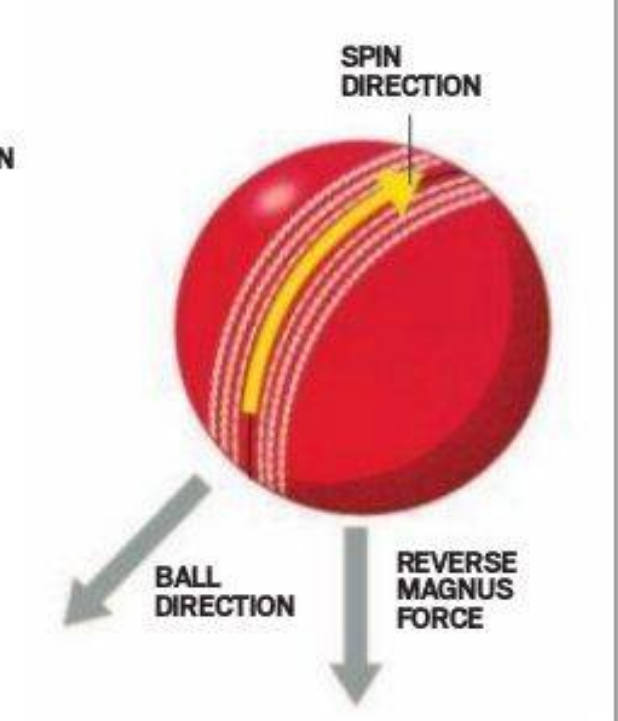First up, releasing the ball with backspin gives it rotation about its horizontal axis, much like a cycle wheel.
Much like a wheel, this enables the seam to stay upright (or slanted) without wobbling.
This is conservation of angular momentum.
This is important, because if the seam is wobbling around, it's almost impossible to get swing.
So your fingers naturally put backspin on the ball, which keeps the seam well-behaved, in a line, which is essential to even generate swing.
Turns out, this is not the only way it's important.
Remember when they talk about bowling fuller when it's swinging?
That's to give the ball more time in the air. More time = more swing = more lateral movement. Also, late swing.
Fine. But what does backspin do?
Backspin enables the ball to hang in the air for longer.
Why? Because of something called the Magnus effect.
The Magnus force is due to this backspin, and it lifts the ball.
The ball hits the ground later than it would if there were no backspin.
So this gives it more airtime. More airtime means more swing. It also means a misjudgement of length.
Interestingly, the Magnus effect also gives the famous dip (a la Ashwin) to spinners.
In that case, the ball has a forward spin, and the Magnus force acts downward.
This is essential to beating a batsman. Because the ball dips and ends up being shorter than the batsman initially judges it to be.
This gives it a better chance of beating the bat.
This effect also generates drift (another Ashwin favourite).
But let's get back to backspin.
Now, remember that backspin gives you lift?
Turns out, for some ranges of backspin speed (about 1000 RPM) and ball speed (about 140 km/h), there is a *reverse* Magnus effect.
Yes, the famed Magnus force now acts *downward*, making the ball dip.
Dipping yorkers, anyone?
So this is a possible reason for some bowlers delivering those scarcely believable yorkers that dip very late in their paths.
This can also be a lethal weapon that makes batsman misjudge length.
Imagine facing dip at 140 km/h!
In fact, an aerodynamics expert from IIT Kanpur claims this is exactly what makes Jasprit Bumrah so lethal!
High speed coupled with high backspin due to his whippy wrist mean some of Bumrah's balls end up in that freaky regime where the reverse Magnus force makes them *dip*!
Unusual action, high accuracy, swing both ways, high pace, and add to that this mind-bending dipping of the ball!
No wonder Bumrah is one of the top bowlers today.
So, this is the tale of backspin. A one-two punch.
Instrumental in ensuring swing happens in the first place.
With the added consequence of increasing movement by lifting the ball!
And sometimes, getting it to dip as well!
https://t.co/7uRGdmbK1f

